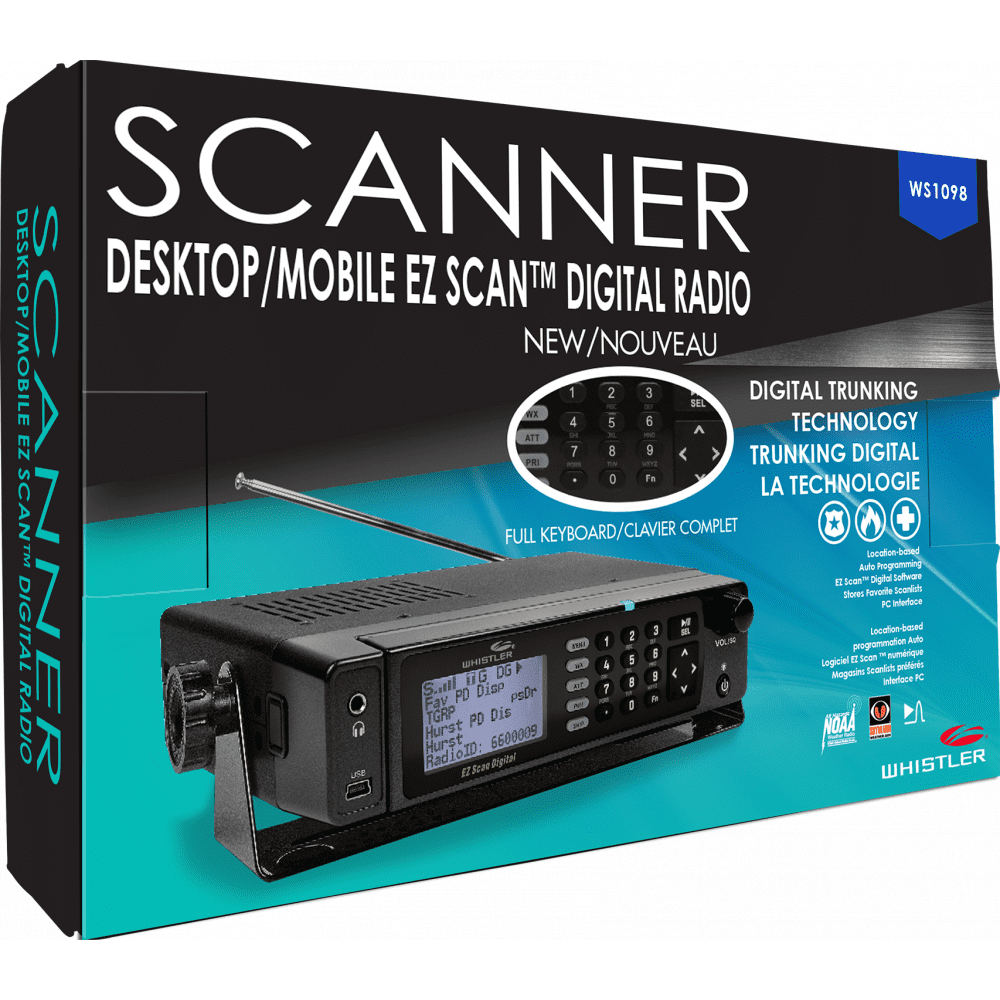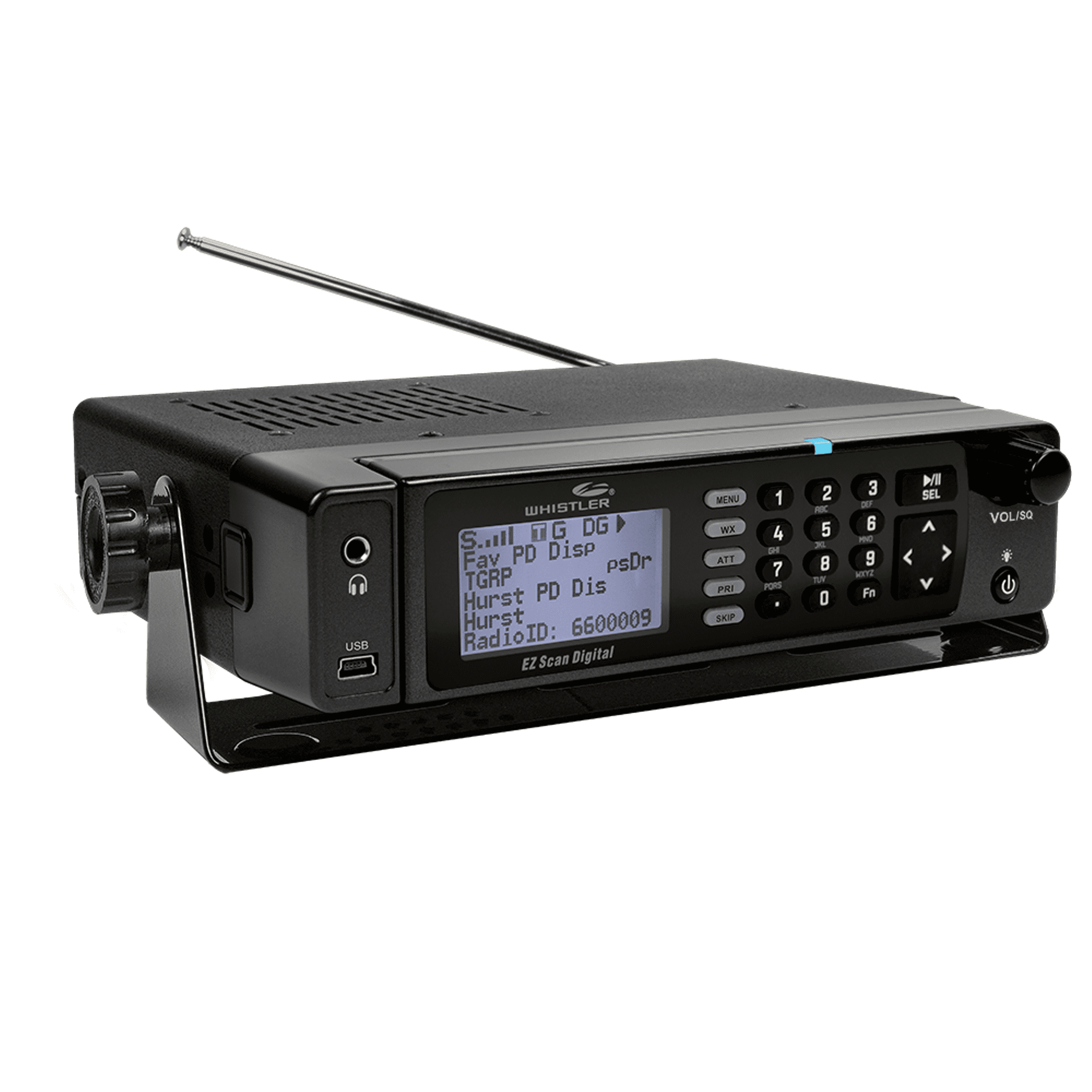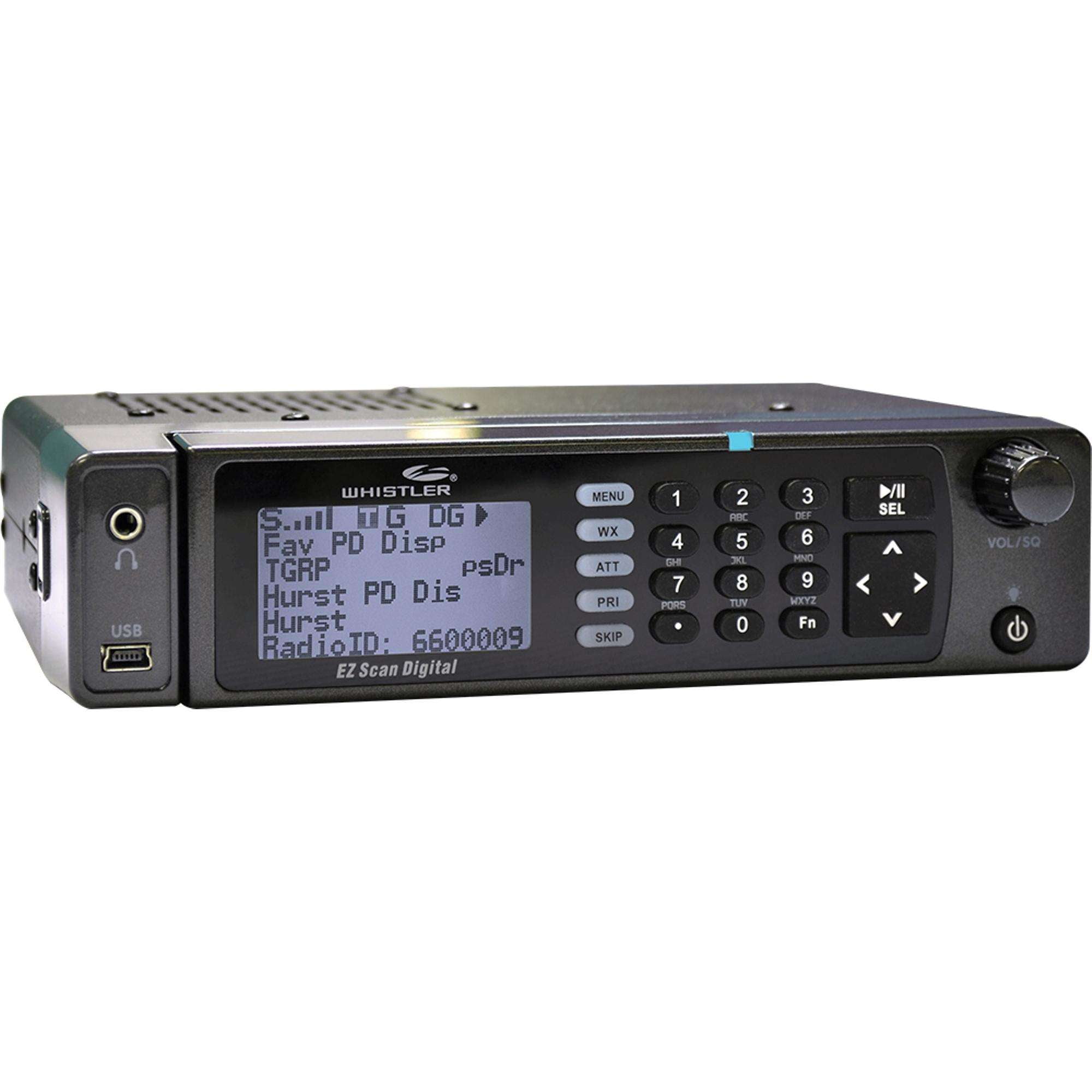
The Whistler ws1098 is a high-performance digital scanner that offers a wide range of features and specifications. Whether you’re a professional or a hobbyist, this scanner is designed to meet your needs and provide you with the best scanning experience possible.
One of the standout features of the Whistler ws1098 is its ability to scan both analog and digital signals. This means that you can listen to a wide variety of communication channels, including police, fire, weather, and more. With its advanced digital decoding capabilities, you can also listen to digital trunking systems, which provide even more channels and options.
In terms of specifications, the Whistler ws1098 offers a frequency range of 25-1300 MHz, allowing you to tune into a wide range of frequencies. It also has a large, easy-to-read display, making it simple to navigate through the various menus and options. The scanner is also equipped with a built-in memory, so you can store your favorite channels and settings for easy access.
Main Features of Whistler ws1098
The Whistler ws1098 is a high-performance digital scanner that offers a range of advanced features and capabilities. Here are the main features of this device:
1. Wide Frequency Range:
The Whistler ws1098 covers a wide frequency range, allowing you to listen to a variety of radio signals. It can receive signals from 25-54 MHz, 108-174 MHz, 216-512 MHz, 764-960 MHz, and 1240-1300 MHz.
2. Digital Trunking:

This scanner supports digital trunking systems, including Motorola P25 Phase I, X2-TDMA, Phase II, and DMR. It allows you to monitor digital radio communications used by public safety agencies, businesses, and other organizations.
3. Multi-System Compatibility:

The Whistler ws1098 is compatible with various analog and digital systems, including APCO 25, EDACS, LTR, Motorola, and DMR. It can decode and display the information transmitted on these systems, providing you with valuable insights.
4. Object-Oriented User Interface:
This scanner features an object-oriented user interface, making it easy to navigate and customize. You can create and organize scan lists, set priority channels, and assign text tags to frequencies for quick identification.
5. Skywarn Storm Spotter Functionality:
The Whistler ws1098 includes Skywarn storm spotter functionality, allowing you to monitor severe weather events. You can receive weather alerts and warnings, ensuring you stay informed and prepared.
6. PC Programming and Control:
You can program and control the Whistler ws1098 using a PC. The scanner comes with software that allows you to easily manage frequencies, systems, and settings. You can also update the scanner’s firmware for future enhancements.
7. Signal Strength Meter:
This scanner has a signal strength meter that helps you determine the strength of received signals. It allows you to optimize antenna placement and improve reception for better audio quality.
8. Memory Capacity:
The Whistler ws1098 has a large memory capacity, allowing you to store a significant number of frequencies and systems. It can store up to 1,800 frequencies in 21 scan lists, ensuring you can monitor a wide range of channels.
Overall, the Whistler ws1098 is a versatile and feature-rich digital scanner that offers excellent performance and functionality. Whether you’re a hobbyist or a professional user, this scanner is a reliable choice for monitoring various radio communications.
Advanced Specifications of Whistler ws1098

The Whistler ws1098 is a high-performance digital scanner that offers a wide range of advanced features and specifications. This scanner is designed for professional users who require a reliable and efficient device for their scanning needs. Here are some of the advanced specifications of the Whistler ws1098:
1. Frequency Range:
The Whistler ws1098 has an impressive frequency range, covering a wide spectrum of frequencies from 25MHz to 1300MHz. This allows users to scan and monitor various communication channels, including police, fire, weather, and more.
2. Digital Trunking:
One of the standout features of the Whistler ws1098 is its digital trunking capabilities. It supports popular trunking systems such as P25 Phase I and II, Motorola, EDACS, and LTR. This ensures that users can easily monitor and decode digital signals from different agencies and organizations.
3. Multi-System Trunking:
In addition to digital trunking, the Whistler ws1098 also supports multi-system trunking. This means that users can program and monitor multiple trunking systems simultaneously, allowing for seamless scanning of different agencies and organizations.
4. Dynamic Memory:
The Whistler ws1098 comes with dynamic memory allocation, which allows users to efficiently manage and store their favorite channels and talkgroups. This feature ensures that users can easily access and monitor their preferred channels without any hassle.
5. PC Programming and Control:
With the Whistler ws1098, users have the option to program and control the scanner using their PC. This makes it convenient for users to customize their scanning experience and easily update the scanner’s firmware when needed.
6. Weather Alert:
The Whistler ws1098 includes a built-in weather alert feature, which automatically scans and alerts users of any severe weather conditions in their area. This ensures that users stay informed and prepared for any potential weather hazards.
7. Audio Recording:
Another notable feature of the Whistler ws1098 is its audio recording capability. Users can record and playback audio from their favorite channels, allowing them to review important conversations or share them with others.
One of the most commonly mentioned pros of the Whistler ws1098 is its ease of use. Users appreciate the intuitive interface and straightforward setup process. Many reviewers also note that the scanner’s menu system is easy to navigate, making it simple to customize settings and access desired features.
Another aspect that users appreciate is the scanner’s performance. The Whistler ws1098 is known for its excellent reception and clear audio quality. Users report that it picks up signals from a wide range of frequencies and provides accurate and reliable information.
While the majority of reviews are positive, there are a few cons mentioned by users. Some reviewers note that the scanner’s battery life could be improved, as it tends to drain relatively quickly. Others mention that the included manual could be more detailed and user-friendly.
Pros:
- Wide Frequency Coverage: The Whistler ws1098 offers a wide frequency coverage, allowing you to listen to a variety of communication channels including police, fire, weather, and more.
- Easy to Use: This scanner is designed with user-friendliness in mind. It features a simple interface and intuitive controls, making it easy for both beginners and experienced users to operate.
- Advanced Features: The Whistler ws1098 comes with advanced features such as programmable scan lists, weather alert capabilities, and a built-in spectrum sweeper. These features enhance the scanning experience and provide more functionality.
- Memory Capacity: With a large memory capacity, the Whistler ws1098 allows you to store and organize a significant amount of frequencies and channels for quick and easy access.
- Portable Design: This scanner is compact and lightweight, making it convenient to carry around and use on the go. It is ideal for use in vehicles or for outdoor activities.
Cons:
- Price: The Whistler ws1098 is priced higher compared to some other scanners on the market. However, considering its advanced features and capabilities, the price is justified.
- Learning Curve: While the Whistler ws1098 is relatively easy to use, there may be a learning curve for beginners who are new to scanning. It may take some time to fully understand and utilize all of its features.
- Battery Life: The battery life of the Whistler ws1098 may not be as long as some users would like. It is recommended to have spare batteries or use a power adapter for extended use.
Overall, the Whistler ws1098 offers a range of benefits such as wide frequency coverage, ease of use, advanced features, and portability. While it may have a higher price tag and a slight learning curve, these drawbacks are outweighed by its functionality and performance. Consider your scanning needs and budget to determine if the Whistler ws1098 is the right choice for you.
Before making a purchase, it is also important to consider the availability of the Whistler ws1098. While this model is popular, it may not always be readily available. It is recommended to check with retailers or online sellers to ensure that the Whistler ws1098 is in stock before making a decision.
1. Whistler ws1098 vs. Uniden BCD436HP
The Uniden BCD436HP is another popular scanner that is often compared to the Whistler ws1098. Both models offer similar features such as digital trunking, weather alerts, and a large memory capacity. However, the Whistler ws1098 has a slightly larger display and a more user-friendly interface, making it easier to navigate through menus and settings.
2. Whistler ws1098 vs. GRE PSR-800
The GRE PSR-800 is another scanner that is often compared to the Whistler ws1098. Both models offer similar features such as digital trunking and a wide frequency range. However, the Whistler ws1098 has a larger memory capacity and a more durable build quality, making it a better choice for those who need a scanner for heavy-duty use.
Q: How do I use and set up the Whistler ws1098?
A: Setting up and using the Whistler ws1098 is a straightforward process. Here are the steps:
Step 1: Unbox the Whistler ws1098 and ensure that all the necessary components are present.
Step 2: Install the provided software on your computer.
Step 3: Connect the Whistler ws1098 to your computer using the USB cable.
Step 4: Turn on the Whistler ws1098 and wait for it to initialize.
Step 5: Launch the software on your computer and establish a connection with the Whistler ws1098.
Step 6: Configure the settings according to your preferences, such as selecting the desired scan mode and setting up the frequency ranges.
Step 7: Save the settings and disconnect the Whistler ws1098 from your computer.
Step 8: Attach the antenna to the Whistler ws1098.
Step 9: Power on the Whistler ws1098 and start scanning for frequencies.
Step 10: Monitor the display for any detected frequencies and adjust the volume and other settings as needed.
Using and setting up the Whistler ws1098 scanner is a straightforward process that can be easily accomplished by following these steps:
Step 1: Unboxing and Inspection
Step 2: Connecting the Antenna
Attach the included antenna to the scanner unit. Ensure that it is securely connected to the designated antenna port on the scanner.
Step 3: Powering On the Scanner
Plug the power adapter into a suitable power outlet and connect it to the scanner. Press the power button to turn on the scanner.
Step 4: Setting Up the Scanner
Once the scanner is powered on, you will need to set it up according to your preferences. This includes selecting the language, date and time format, and other settings. Follow the instructions provided in the user manual to navigate through the setup process.
Step 5: Programming Frequencies
To start using the scanner, you will need to program the frequencies you want to monitor. This can be done manually by entering the frequency information or by using software and a computer to import pre-programmed frequencies. Refer to the user manual for detailed instructions on how to program frequencies.
Step 6: Scanning and Monitoring
Once the frequencies are programmed, you can start scanning and monitoring various channels. Use the scanner’s controls to navigate through the programmed frequencies and listen to the transmissions. You can also set up scan lists and priority channels for more efficient scanning.
Step 7: Customizing Settings
The Whistler ws1098 scanner offers various customization options to enhance your scanning experience. You can adjust the volume, squelch level, backlight settings, and other settings according to your preferences. Consult the user manual for detailed instructions on how to customize the scanner’s settings.
Step 8: Updating Firmware
Periodically, Whistler releases firmware updates for the ws1098 scanner to improve its performance and add new features. It is recommended to check for firmware updates regularly and update the scanner accordingly. Instructions for updating the firmware can be found in the user manual or on the Whistler website.
Step 9: Troubleshooting
If you encounter any issues or difficulties while using the Whistler ws1098 scanner, refer to the troubleshooting section in the user manual. It provides solutions to common problems and helps you resolve any technical issues you may face.
Step 10: Maintenance and Care
By following these steps, you will be able to effectively use and set up the Whistler ws1098 scanner for your scanning needs.
If you are experiencing any issues with your Whistler ws1098 scanner, this troubleshooting guide will help you identify and resolve common problems.
No Power
- Make sure the scanner is properly connected to a power source.
- Check if the power cable is securely plugged into the scanner and the power outlet.
- Try using a different power outlet to rule out any issues with the current outlet.
- If the scanner still doesn’t power on, check the fuse in the power cable and replace it if necessary.
No Reception
- Ensure that the antenna is properly connected to the scanner.
- Check if the antenna is positioned correctly and not obstructed by any objects.
- Try adjusting the squelch level to improve reception.
- Make sure you are in an area with sufficient signal coverage for the frequencies you are trying to receive.
Poor Audio Quality
- Check the volume level and adjust it accordingly.
- Make sure the speaker is not damaged or blocked.
- Try using headphones to see if the audio quality improves.
- If you are using an external speaker, ensure that it is properly connected and functioning correctly.
Scanner Freezing or Locking Up
- Try turning the scanner off and then on again to see if it resolves the issue.
- Check if the scanner’s memory is full and delete unnecessary stored frequencies.
- Ensure that the scanner’s firmware is up to date. Visit the manufacturer’s website for any available updates.
- If the problem persists, perform a factory reset to restore the scanner to its default settings.
Error Messages
- Take note of any error messages displayed on the scanner’s screen.
- Refer to the user manual or the manufacturer’s website for a list of error codes and their meanings.
- Follow the recommended troubleshooting steps provided for each specific error code.
- If the error persists, contact the manufacturer’s customer support for further assistance.
By following these troubleshooting steps, you should be able to resolve most common issues with your Whistler ws1098 scanner. If you are still unable to resolve the problem, it is recommended to seek professional assistance or contact the manufacturer’s customer support for further guidance.

Over the years, I have amassed a wealth of experience and knowledge, which I eagerly share with fellow radio aficionados. Through my writing and active participation in the amateur radio community, I strive to inspire others and provide valuable insights into this fascinating hobby. Engaging in various radio activities, I continue to learn and grow, constantly amazed by the endless possibilities that radio communication offers.

